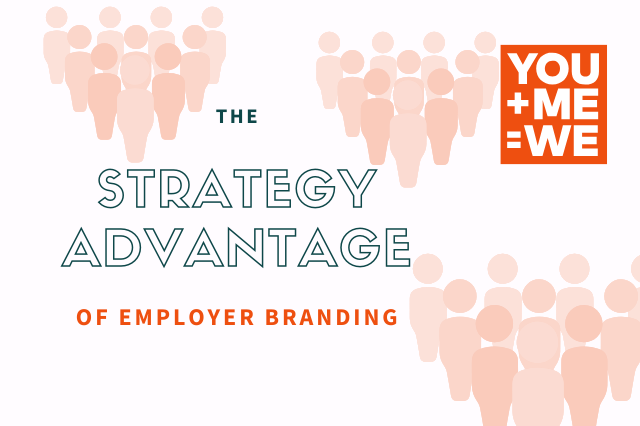
13 Jan The Strategy Advantage of Good Employer Branding
Employer Branding should be a part of your overall branding strategy. Branding is your business’s reputation – a powerful synergistic force that filters how your customers and shareholders view your business. From your products and services to leaders, employees, history, culture, and even political awareness, your branding influences how everyone interacts with you, from how they use your products to how they speak about you. Reputation is your company’s greatest pervasive social force in your community, and your brand is the accumulation of that.
Most people primarily see your company branding. That’s usually your company as a whole – establishing your products as trustworthy and reliable, presenting yourself as a dependable expert in your area of the industry, and building long-lasting trust from customers in your products and services. However, that’s your primary branding – and there’s also a secondary brand that your business is intimately connected to.
That is your Employer Branding.
What is Employer Branding?
Employer Branding is intrinsically tied to the lifeblood of any business – your employees. A great employer brand should be a living mission that exists in the mind of every past, present and future employee, following the general fact that a great leader inspires great followers.
In an increasingly competitive job market, hiring and retaining talent is critical, and remains and challenging and costly process. Many potential employees will judge your business before applying for a position, examining your business ethics, culture, benefits, reviews, and most importantly, leadership.
A strong employer brand can boost and define your company’s culture in the mind of your employees. The story of an altruistic CEO who strongly lead their company through a financial crisis while still keeping employee benefits a priority sends a strong message of trust and attraction to job candidates who can feel satisfied that they will be well taken care of if they join your company.
Crafting a great story for who your leadership is a strategic move that manipulates how people perceive your business. Maintaining this branding in your company then creates the best sort of advertisement as your employees absorb the branding and become spokespersons for your business by their own volition, creating your employee brand. Additionally, it’s a great move in a technological world where reputation can’t be completely controlled.
Branding doesn’t stop at the company and employer levels – the reputation of a company isn’t only encapsulated by how people view your business from the outside, or how people view your top brass. Reputation comes from the ground up, from employee branding that can further extend your business reputation, to even igniting your brand through office design.
How to structure employer branding
Know your company’s unique value proposition. To create a persuasive employer brand, it’s important that you start by concentrating on your company’s mission statement, values, vision, and culture. Conduct an employer brand audit. You might not be completely aware of the reputation your company has among prospective or current employees. Write an employer value proposition. This is a marketing message and a promise, so don’t say anything that isn’t true, or that your employees wouldn’t agree with.
Leverage current employees. When prospective employees want to learn more about your employer brand, they’re going to want to hear from and see real employees at your company. Cultivate a strong onboarding process. It’s crucial you get employees engaged and excited about their roles, and their teams, from the start. Offer learning and development opportunities. By challenging your employees, you’re ensuring they don’t get bored in their roles.
Use video, blog posts, photos, and slideshows to tell your company story.
Create a strong diversity and inclusion initiative. If you want to create a strong employer brand, it’s critical you show your commitment to building diverse teams thus extending your brand’s reach to new groups of people meaning more innovative ideas, stronger workplace culture and better customer service.
Get onto it!



Sorry, the comment form is closed at this time.